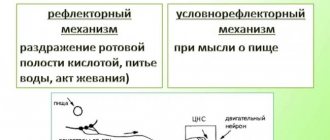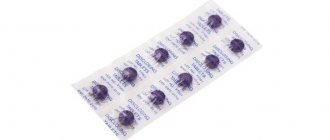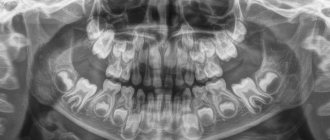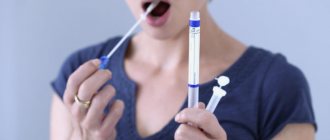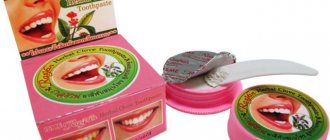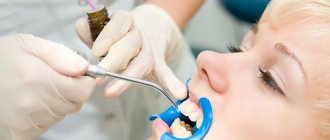We swallow saliva regularly. And we are accustomed to the fact that the oral cavity is always wet and we perceive the cessation of sufficient production of this biological fluid with suspicion. As a rule, increased dry mouth is a sign of some disease.
Saliva is a common and necessary biologically active liquid. Helps maintain the level of immune defense in the oral cavity and digestion of food. What is the composition of human saliva, fluid production rates, as well as physical and chemical properties?
A little biology
Saliva is a biological substance secreted by the salivary glands. Liquid is produced by 6 large glands - submandibular, parotid, sublingual - and many small ones located in the oral cavity. Up to 2.5 liters of fluid are released per day.
The composition of the secretions of the salivary glands differs from the composition of the fluid in the oral cavity. This is due to the presence of food debris and the presence of microorganisms.
Functions of biological fluid:
- wetting the food bolus;
- disinfectant;
- protective;
- promotes articulation and swallowing of food bolus;
- breakdown of carbohydrates in the oral cavity;
- transport - the liquid wets the epithelium of the oral cavity and participates in the exchange of substances between saliva and the oral mucosa.
Mechanism of saliva production
Importance in Dentistry
Oral dysbiosis
The pH of mixed saliva allows us to judge the degree of demineralization of free dental tissues. This biological fluid constantly maintains a neutral acid-base reaction (average value - 7.2) of the oral environment due to the proteins and phosphates it contains.
According to the results of modern research, it is the prolonged exposure of acids to the hard tissues of teeth that provokes the appearance of carious lesions. When acidity decreases, saliva retains and binds calcium atoms, which leads to demineralization of teeth. Biological fluid prevents the dissolution of enamel and ensures the diffusion of calcium and phosphorus ions.
Physical properties and composition of saliva
Biological fluid in a healthy person has a number of physical and chemical properties. They are presented in the table.
Table 1. Normal characteristics of saliva.
| Index | Characteristic |
| Transparency | Transparent, minor inclusions of air, pieces of food. |
| Density | Slightly higher than the density of water, depending on the composition - from 1 to 1.12 g/ml. |
| Color | Normally – absent. |
| Viscosity | Insignificant and unstable, depends on the current state of the body. |
| Taste | Absent. |
| pH | Alkaline – 7.4–8.0. |
The main component of oral fluid is water – up to 98%. The remaining components can be roughly divided into acids, minerals, trace elements, enzymes, metal compounds, and organics.
Measurement methods
Litmus paper is a tool that allows you to determine the pH of saliva in the mouth both in the laboratory and at home. Such test strips can change color in the presence of alkalis and acids. The environment, accordingly, can be neutral, alkaline, acidic.
Important! Using litmus strips is very simple - just dip the strip in the desired solution for 2-3 seconds and compare the resulting shade with the scale.
How to use a litmus test strip should be read in the instructions
An acidic environment is considered when Ph is less, alkaline - more than 7. Indicator paper can have different forms, sold in the form of strips, boxes, rolls, pencil cases, tubes. It is noteworthy that universal litmus strips are used exclusively for determining Ph values over a wide range (accuracy - up to 1 unit or tenth).
Subtleties of saliva secretion
0.5 ml of saliva per minute should be produced in a healthy person during the daytime
The work of the salivary glands is controlled by the autonomic nervous system, centered in the medulla oblongata. Salivary fluid production varies depending on the time of day. At night and during sleep, its amount decreases sharply and increases during the day. In a state of anesthesia, the work of the glands completely stops.
During wakefulness, 0.5 ml of saliva is secreted per minute. If the glands are stimulated - for example, during a meal - they produce up to 2.3 ml of liquid secretion.
The composition of the secretion of each gland is different. When it enters the oral cavity, mixing occurs, and it is called “oral fluid.” Unlike the sterile secretion of the salivary glands, it contains beneficial and opportunistic microflora, metabolic products, desquamated epithelium of the oral cavity, discharge from the maxillary sinuses, sputum, red and white blood cells.
pH values are influenced by compliance with hygiene requirements and the nature of food. So, when stimulating the work of the glands, the indicators shift to the alkaline side, and with a lack of fluid - to the acidic side.
In various pathological processes, there is a decrease or increase in the secretion of oral fluid. Thus, with stomatitis, neuralgia of the branches of the trigeminal nerve, and various bacterial diseases, overproduction is observed. With inflammatory processes in the respiratory system and diabetes mellitus, the secretion production of the salivary glands decreases.
The role of Ph in the body
Acid pharyngolaryngeal and gastroesophageal refluxes that reach the oral cavity play an active role in the development of “local” pathological processes. After the hydrochloric acid has reached its destination, the Ph of the mixed saliva decreases to 7.
The secretion, which normally has alkaline properties, with an acidity level of 6–6.2 causes the destruction of tooth enamel, its demineralization, which subsequently results in the appearance of carious lesions. The gums become inflamed, become swollen, turn red, and the amount of mucus on the mucous membrane increases noticeably.
Acid-base balance in the human body is an important indicator
Oxygen-rich saliva prevents the proliferation of pathogenic microflora; with low acidity, these microorganisms “bloom.” Hunger, excitement, stress, pronouncing a long monologue, breathing through the mouth - these are all the factors that lead to a decrease in Ph. This same phenomenon is associated with natural age-related changes in the body.
What happens when there is insufficient saliva production?
According to statistics, every fifth adult is diagnosed with xerostomia, or dry mouth. This condition is caused by the fact that a person has reduced or completely absent saliva production. Since this biofluid performs a number of important functions, with xerostomia negative changes occur in the oral cavity:
- discomfort occurs;
- the level of hygiene of teeth and gums decreases;
- Due to a lack of saliva, the pH of the oral cavity decreases, microbes actively multiply in the mouth, and dental caries may begin to develop.
Causes of sticky saliva in the throat
Saliva can not only foam, but also seem to get stuck in the throat. In this case, it is necessary to examine an ENT doctor for damage to the tonsils and larynx. Purulent forms of tonsillitis or tonsillitis are accompanied by the appearance of plaques on the tonsils, which create discomfort and pain, and when opened, they release purulent contents into the pharynx, increasing the saturation of sputum.
Gum disease accompanied by the discharge of pus may also be an explanation for why saliva has become thick, viscous and felt in the throat. Such diseases include periodontitis, periodontal disease, cysts, cellulitis and abscesses. Sticky pus from the affected areas of the gums mixes with saliva and makes swallowing difficult.
A real cocktail
The fluid that is secreted by the salivary glands is a whole cocktail of proteins, vitamins, micro- and macroelements, although most of it, 98–99%, is water.
The concentration of iodine, calcium, potassium, strontium in saliva is many times higher than in the blood. Microelements are also present in the salivary fluid: iron, copper, manganese, nickel, lithium, aluminum, sodium, calcium, manganese, zinc, potassium, chromium, silver, bismuth, lead. Article on the topic Protect the liver. Hepatitis C can be detected by saliva testing
Such a rich composition ensures the proper functioning of salivary enzymes, which begin digesting food in the mouth. One of the enzymes, lysozyme, has a significant bactericidal effect - and it is isolated for the preparation of certain drugs.
Folk remedies
Taken 4 tbsp. l. crushed pine bark and needles are steamed with a liter of boiling water, then boiled for another 10 minutes over low heat, left to infuse for an hour. Dosage regimen: drink 2 tbsp. l. three times a day. It is useful to lubricate the oral mucosa in the morning and evening with a mixture of propolis tincture and peach oil. Combine ½ tbsp. l. aloe juice and honey, take the medicine 1-2 times a day.
If the patient constantly experiences increased viscosity and stickiness of saliva, it is recommended to visit a dentist for diagnosis and treatment.
Kravets T.P.
SALIVA AS A PROTECTION FACTOR AND AS A RISK FACTOR FOR DENTAL CARIES
State Institution "Dnepropetrovsk Medical Academy of the Ministry of Health of Ukraine"
Saliva is the secretion of the salivary glands and an important biochemical environment of the oral cavity; its properties and chemical composition have a significant impact on the condition of the teeth and the oral mucosa.
Saliva is secreted by the large parotid, sublingual, submandibular glands and small salivary glands of the oral mucosa. The large parotid glands secrete a serous type of secretion; the sublingual and submandibular glands secrete a mixed type of secretion, which additionally contains a lot of mucin and is therefore characterized by increased viscosity.
In the oral cavity, the secretions of the salivary glands mix with apoptotic epithelial cells, leukocytes, bacteria and food debris, and the mixed saliva turns into oral fluid. As the basis of the natural system of protection of organs and tissues of the oral cavity, oral fluid neutralizes the effects of acids, washes away food debris and bacteria, moisturizes the surface of the teeth and serves as a powerful source of macro- and microelements into the hard tissues of the teeth.
Normally, about 1.5-2 liters of saliva are secreted per day. The greatest amount of secretion is provided by the submandibular salivary glands (up to 70%), the parotid salivary glands secrete up to 25%, the sublingual glands - 2-4%, the rest of the secretion occurs in the small glands of the oral mucosa. Saliva contains 99% water and 1% dissolved substance, which is 1/3 inorganic and 2/3 organic components. The inorganic component of saliva is macro- and microelements. In the oral fluid they are in an ionized state and in the composition of organic formations - proteins, protein salts and chelates. The organic component of saliva is represented by albumins, glycoproteins, amino acids, monosaccharides, organic acids, etc.
According to modern concepts, saliva is a structured biological fluid, the entire volume of which is distributed between micelles, the core of which is formed by calcium phosphates, surrounded by dense structured water-protein shells. This maintains the molecules in the solution in a suspended state, which prevents their interaction with each other (V.K. Leontiev, M.V. Galliulina, 1991).
Saliva secretion is phasic and changes with age. The rate of saliva secretion begins to increase from the first days of life to 11-12 years, decreases at 21-40 years and decreases in old age. Normally, the rate of saliva secretion is 0.03-2.4 ml/min. At night, the rate of salivation decreases, which creates conditions for the proliferation of microflora, gluing it to the tooth enamel and contributes to the development of a cariogenic situation.
The physiological role of saliva is the constant flow and intensive cleansing of the oral cavity, washing away food debris and decay products, microflora, metabolism in the tissues and organs of the oral cavity.
There are 3 types of salivation:
· Reduced
salivation – 0.03-0.30 ml/min;
· Normal
salivation – 0.31-0.60 ml/min;
· Increased
salivation – 0.61-2.4 ml/min.
A cariogenic situation in the oral cavity occurs when salivation decreases below 0.30 ml/min, and a decrease in salivation by 14% has a prognostic value regarding the development of caries. Reduced salivation or complete absence of saliva leads to the development of xerostomia, which is also a risk factor for dental caries.
Visually, the level of natural salivation is determined by the rate at which drops of saliva appear around the minor salivary glands on the mucous membrane of the lower lip after preliminary drying.
Normal
The level of salivation is assessed when drops of saliva appear within 30-60 seconds.
Weak
salivation is observed when the rate of appearance of saliva droplets decreases over 60 seconds.
Abundant
(increased) salivation is observed when drops of saliva appear for up to 30 seconds.
Mucin
– salivary glycoprotein is supplied mostly by the submandibular salivary glands and, together with other salivary proteins, determines the viscosity of saliva, which is measured by an Oswald viscometer. The normal saliva viscosity value is 1.46. During visual inspection, the consistency (viscosity) of saliva can be assessed by sipping the saliva with a spatula:
· Normal
- saliva is watery, transparent;
· Increased
– viscous saliva with bubbles;
· Very viscous
- the saliva foams, reaching for the spatula with threads.
Mucin promotes the adhesion of dental plaque and dental plaque to the enamel surface. Increased saliva viscosity is a risk factor for caries.
The biological role of saliva is varied and performs various functions.
(L.M.Tarasenko and spivat., 2000):
· Digestive
– provided by mechanical grinding and moistening of food, facilitating swallowing, dissolving salts, sugars, breaking down complex food components with the participation of hydrolytic enzymes - α-amylase, maltase, trypsin-like enzymes, pepsinogen, lipase, nuclease, etc.;
· Protective –
consists in the ability of saliva to cleanse the oral cavity, secrete protective enzymes, secretory immunoglobulin A, mucin, protease inhibitors and blood clotting factors;
· Regulatory –
the property of saliva to maintain the homeostasis of the oral cavity due to the release of hormones, peptides with high biological activity that regulate metabolism and mineralization processes of the oral organs (cortisol, estrogens, progesterone, testosterone, parotin, nerve growth factor, epithelial growth factor, proteins expressing affinity for calcium and etc.);
· Mineralizing –
determined by the saturation of the mineral components of saliva -
MCS
and their participation in the formation of apatites of hard dental tissues;
· Excretory –
promotes the release of end products of nitrogen metabolism (urea, urease), hormone metabolites, mineral salts, drugs, toxins;
· Buffer function –
due to the presence of a phosphate buffer and proteins in it, the quantitative ratio of primary and secondary phosphates in saliva provides a slightly alkaline reaction.
Pure saliva from the ducts of the salivary glands is more alkaline than oral fluid. Maintaining a constant pH in the oral cavity is important for the processes of mineralization, remineralization of enamel and for optimal enzyme action.
The buffer capacity of saliva is determined using indicator strips of the “GC Saliva Check” test system, the assessment is carried out by changing the color of the indication from green to red in points (N.O. Savichuk, N.Ya. Polyanik, 2008; M. Larmas, 1992) :
Normal
(high buffer potential) corresponds to a level of 10-12 points;
Reduced
the buffer capacity of saliva is in the range of
6-9 points;
Very low
– the buffer capacity of saliva is at the level of 0-5 points.
The physical properties of saliva (specific gravity, salivary viscosity and pH) provide homeostasis in the oral cavity. Mixed saliva is a viscous liquid with a specific gravity of 1.001-1.0017 g/ml. The viscosity of saliva is due to the presence of mucin, which prevents damage to the mucous membranes and esophagus during the passage of a bolus of food and is involved in the formation of pellicles - the protective coating of tooth enamel.
RN
mixed saliva ranges from 6.4-7.8. An alkaline pH above 7.0 creates conditions for the entry of calcium and phosphorus ions into the hard tissues of teeth.
A significant decrease in the pH of oral fluid to the acidic side is due to the activity of microorganisms that secrete organic acids that affect mineralization processes/
demineralization of hard dental tissues.
Acidic pH in the oral cavity creates conditions for the development of acidophilic bacteria, which produce large amounts of lactic acid from sucrose, leading to demineralization of tooth enamel and the development of a cariogenic situation in the oral cavity. Saliva with a pH of 6.2-6.0 quickly loses its saturation with hydroxyapatite, becomes capable of its rapid dissolution and loses its mineralizing properties. With a further decrease in pH below 6.0, demineralization processes occur more intensively.
The mineralizing potential of saliva is determined by the type of microcrystallization of saliva - MCS,
which is manifested by various types of crystal formation and is assessed in points from 5 to 0. For screening assessment of the mineralizing potential of saliva, the ISS assessment criteria are used.
ISS evaluation criteria:
0,0 – 1,0
– very low mineralizing potential of saliva;
1,1 – 2,0
- short;
2,1 – 3,0
– satisfactory;
3,1 – 4,0
- high;
4,1 – 5,0
– very high. In persons with high resistance of hard dental tissues, saliva has a high mineralizing potential within the range of 4.0 -5.0 points.
A decrease in MCS in saliva indicates the development of a cariogenic situation in the oral cavity and serves as a prognostic criterion for identifying one of the risk factors (N.M. Krupnik, 1997; V.K. Leontyev et al., 1999; I.V. Chizhevsky, 2001).
Organic components of saliva - proteins
(proteins, highly polymerized glycoprotein, mucin)
, carbohydrates, non-protein nitrogen-containing substances, vitamins
, cyclic nucleotides, more than 50 enzymes (acid and alkaline phosphatase, amylase, hyaluronidase, proteolytic enzymes, diastase, lysozyme) and other compounds.
The most important organic components of saliva are salivary proteins, which according to their functional properties are divided into 3 groups
(K.M.Veremienko, O.Y.Kizim, 2005):
1)
enzyme proteins
- take part in the processes of digestion and degradation of basic biological polymers - mucopolysaccharides, nucleic acids, proteins (amylase, maltase, nucleases, phosphatases, proteolytic enzymes);
2)
biologically active substances
- regulators of blood circulation, microcirculation, nervous and other systems of the body (kallikrein, renin, plasminogen, plasmin, regulators of nerve growth, epidermis, mesoderm, hematopoiesis, etc.);
3)
proteins that perform a protective function
(secretory immunoglobulin A, immunoglobulins A, M, G, E, lysozyme, peroxidase, catalase, antiproteases).
Proper mineralization of teeth is ensured by the full functioning of the salivary glands, the release of a sufficient amount of saliva, its acidity (pH) and buffer properties (saturation with proteins, amino acids, macro-, microelements, nonspecific protective factors, enzymes), which maintain homeostasis in the oral cavity.
Thus, saliva is the most important factor in the homeostasis of mineral components in the oral cavity due to its mineralizing properties, realized through the mechanism of its oversaturation with hydroxyapatite, protective, antibacterial, immunological mechanisms and the self-cleaning function of the oral cavity.
When identifying risk factors in the oral cavity from saliva that create a cariogenic situation, in terms of sanitation and preventive measures, the dentist should provide items and means to improve oral hygiene and means that affect the improvement of the activity of the salivary glands (rate of excretion, reduction of saliva viscosity , normalization of salivation), as well as increasing the mineralizing potential of saliva to create conditions for proper mineralization of hard dental tissues, which ultimately will help reduce the growth and development of dental caries.
Literature
Leontyev V.K., Galliulina M.V. Changes in the structural properties of saliva with changes in pH // Dentistry.-1999, T.78.-No.2.-P.20-24.
Tarasenko L.M., Neporada K.S., Grigorenko V.K. Functional biochemistry. - Poltava, 2000. - 216 p.
Savichuk N.O., Polyanik N.Ya. Testing the power of the oral cavity with the results of the “GC Saliva Check” test system in children with hearing impairments and their comparison with the indicators of healthy children // Aesculapius Dentis.-2008.- No. 3.-P.34-39.
Larmas M. Saliva and dental caries: diagnostic test for normal dental practice //Int.Dent.J.-1992, Vol.42.- No. 4.-P.199-208.
Chizhevsky I.V. The role of some risk factors in the pathogenesis of dental caries in children // Bulletin of Dentistry.-2001.-No. 2.-P.40-43.
Veremienko K.M., Kizim O.Y. Biochemistry of oral secretion and clinical research //Lab. diagnostics.-2005.-No. 2.-P.9-14.
The main secret: is it true that you can be treated with saliva?
Licking wounds is an instinctive response to trauma not only in animals, but also in our ancestors. According to legend, in 1589, Saint Magdalena de Pazzi cured one of the nuns from ulcers by licking her feet, and the Roman Emperor Vespasian once healed a blind man using his saliva. They did this for a reason; saliva really helped fight inflammation in those days when bactericidal ointments did not exist. “Hungry” or morning saliva was considered especially medicinal - supposedly it was completely cleansed overnight and was saturated with substances that promote healing. Burns, warts and other skin diseases were treated with baby saliva or animal saliva - it was considered quite natural to let a cat or dog lick your wound.
Saliva is a unique fluid secreted by three pairs of salivary glands located under the tongue, under the jaw and near the ears. It consists of 98.5% water, and the rest is various chemicals, which scientists have begun to study quite recently. has been found to contain a unique combination of proteins that can tell the truth about our health, from blood sugar levels to detecting cancer and heart disease. That is why today more and more tests and analyzes in medical laboratories are carried out based on its composition.
Saliva also contains substances that promote blood clotting and protect against infections. The antibacterial enzyme lysozyme attacks the cell walls of many bacteria, and the protein thrombospondin has antiviral properties. Antileukoproteinase present in saliva is both antibacterial and antiviral and also heals wounds. Saliva also contains opiorphin , a powerful analgesic six times more potent than morphine, which was only discovered by scientists in 2006. Thanks to him, we do not feel pain when small wounds appear in the mouth. Well, the main savior protein is histatin . Research conducted in 2008 proved that it not only kills bacteria, but also promotes wound healing within 16 hours.
Despite ongoing research into one of the most important secrets of our glands, doctors still do not recommend relying on the disinfecting properties of saliva, because the bacteria it contains can cause harm if they get into the wound, especially if the immune system is weakened. A British medical journal in 2002 described a case in which a man with diabetes cut his finger, decided to lick it, and developed an infection that had to be amputated.
Ph meter
This device allows you to measure acidity at home. It is believed that it does not have high accuracy, but it is inexpensive and convenient to use. The cost of a Ph meter depends on its characteristics. In particular, you should pay attention to the measurement range - from 0.00 to 14.00. In addition, indicators such as operating temperature, device division value, and accuracy are important. When purchasing, it is worth considering that the device must be calibrated.
What is the sequence of steps to determine the acidity of saliva, urine, blood or other liquids at home using a Ph meter:
- it is necessary to remove the protective cap at the bottom of the device body;
- turn on the device (move the slider to the right);
- immerse the Ph-meter up to the grooved mark in the liquid whose acidity is to be tested (in this case, in mixed saliva);
- read the readings after they have stabilized.
After each measurement, it is necessary to thoroughly rinse the electrode of the device with distilled water. As soon as the manipulations are completed, wipe the device dry with a napkin and put on the protective cap.
Important! To obtain reliable data, it is recommended to measure the acidity of saliva at least 5–8 times a day.
